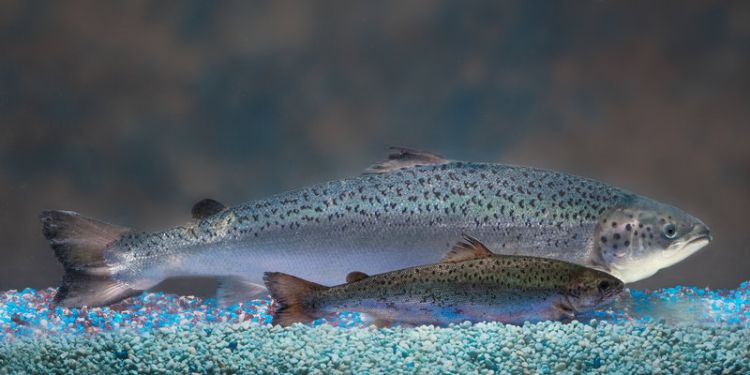In a news-analysis in 2012, it was discussed with the title “Approval for the first commercial Transgenic animal: Transgenic Salmon will be on the tables in 2014” and it was mentioned that the first transgenic fish would be on the tables in 2014. FDA announced the marketing authorization of the product in question in its news dated 19.11.2015.
How was GMO salmon commercialized?
Aqua Bounty Technologies, a US company, has received marketing authorization for the product in question, according to the FDA’s news dated 19.11.2015. In fact, the biosecurity report of the company’s application was ready on April 19, 2012. For approval, the “yes” signal from the White House was expected. This shows that the incident was concluded with political analysis by taking the pulse of the public.
The transgenic Atlantic salmon, developed by this US company using bioengineering methods rather than routine hybridization, aims to reach consumers with the performance described below. Two separate genes (the growth hormone gene and the antifreeze gene) are transferred to Atlantic salmon from distantly related fish. The production of this type of salmon, which is said to be planned to be produced in tanks on land, rather than with nets or tank systems at sea, will be produced only with females that cannot reproduce. Another claim is that the new transgenic salmon does not show any difference from normal salmon in terms of taste, color, vitamins, fatty acids, minerals and other components.
What are the claimed advantages of transgenic fish?
GMO salmon can be grown at any time of the year and therefore grow quickly. However, normal salmon can only thrive in the warmer months. The size that transgenic and normal salmon reach in the same period of time is very different. Reaching marketing maturity can be reduced from 30 months to 16-18 months. The cost of their cultivation is decreasing. Because transgenics consume 10% less feed. On the other hand, antibiotics used in normal salmon farming are eliminated in transgenic salmon farming.
What are the defenses of the side against GMO Salmon?
When the concerns of those who oppose GMOs are heard, it is difficult not to agree with them. It is argued that natural transgenic salmon can hybridize with natural populations and virtually destroy the world heritage. The opposing view of the company is that triploid (non-reproductive) female fish will be used in production and production will be done in tanks on land, far from the oceans, rather than with a net or tank system in the ocean or seas.
One of the claims of opponents of GMOs is that “data show that there may be high levels of allergy-producing compounds in genetically modified salmon, meaning that they may pose a greater food allergy threat.” There is no answer to this claim.
Again, opponents have concerns that transgenic salmon require three times as much protein-based feed to feed and develop, and therefore existing feed resources may not be sufficient for the salmon and may even dry up the resources. Although the views of technology owners have not yet crystallized on this issue, they argue that the feed issue will not be a problem.
Those who think more deeply argue that production in tanks on land would also be dangerous. In the USA, where natural events such as hurricanes and tornadoes are common, the registration of transgenic salmon is opposed due to the risk of the parent genotypes reaching the oceans. The company’s opinion on this issue is that geographies that will not even be affected by such dangers will be selected. Regarding marketing, production is permitted only in Panama and Canada.
FDA also made a statement that labeling such as “It is a GMO product” during the marketing phase of the product was left to the company’s request. This poses a major problem and threat to consumers who are sensitive to GMO products in world markets.
“And when they leave ˹you˺,1 they strive throughout the land to spread mischief in it and destroy crops and cattle. Allah does not like mischief.” (Surah Al-Baqarah, Ayat 205)
Resources:
https://www.npr.org/sections/thesalt/2015/06/24/413755699/genetically-modified-salmon-coming-to-a-river-near-you
https://www.fda.gov/news-events/press-announcements/statement-fda-commissioner-scott-gottlieb-md-continued-efforts-advance-safe-biotechnology
https://www.fda.gov/animal-veterinary/intentional-genomic-alterations-igas-animals/aquadvantage-salmon
İLK TİCARİ TRANSGENİK HAYVANA ONAY: TRANSGENİK SOMON 2014’DE SOFRALARDA






